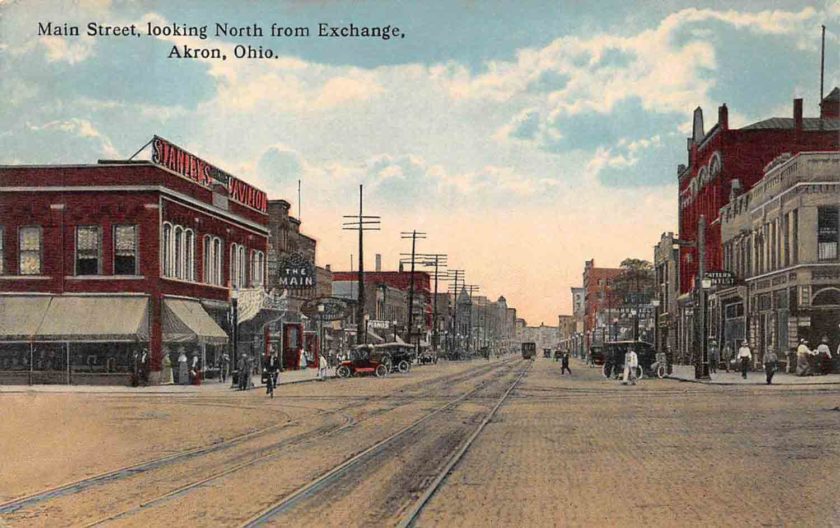
Category: Streets/Bridges

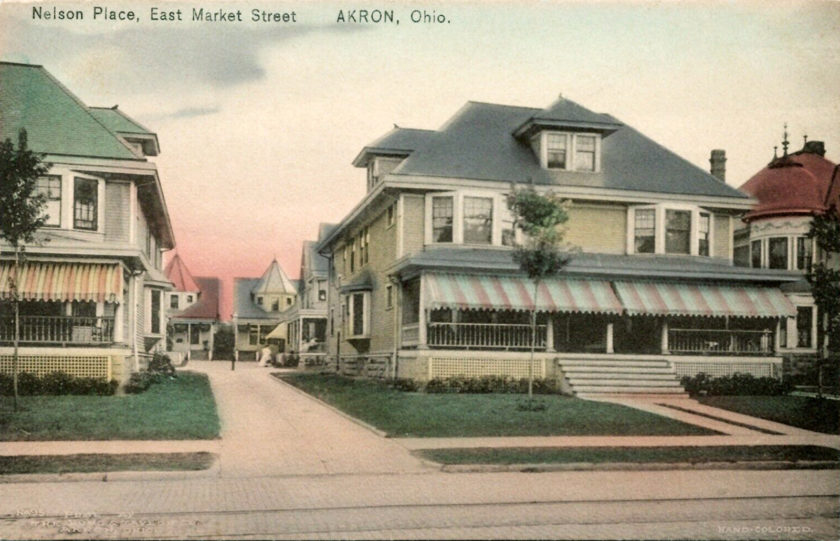
Nelson Place – East Market St.
Residences along East Market Street.
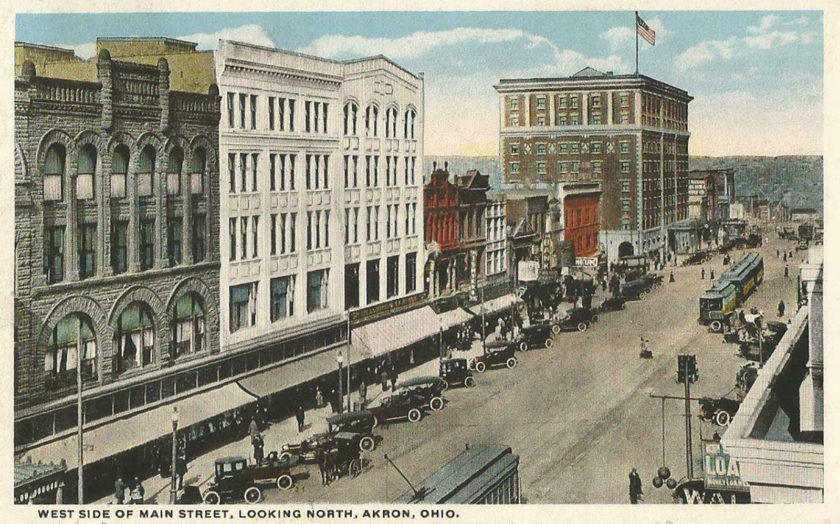
West Side of Main Street, Akron
Akron’s Main Street has seen many changes over the years. The city would hardly be recognized by founders Simon Perkins and Paul Williams.
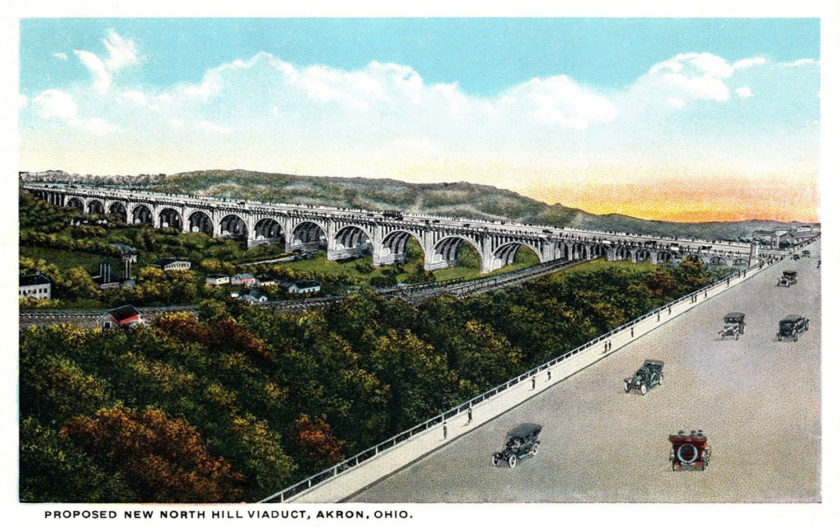
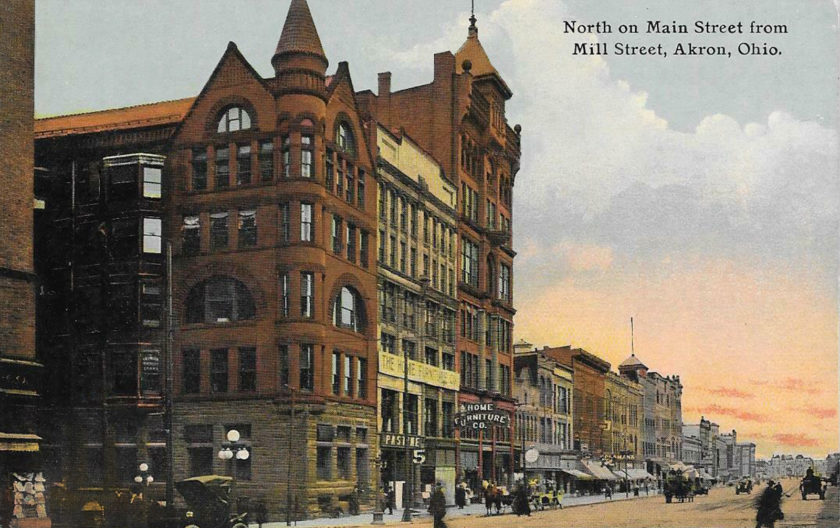
Main Street Looking North from Mill Street
Motor cars were still new on the scene when this image of Akron’s Main Street was captured by the photographer.
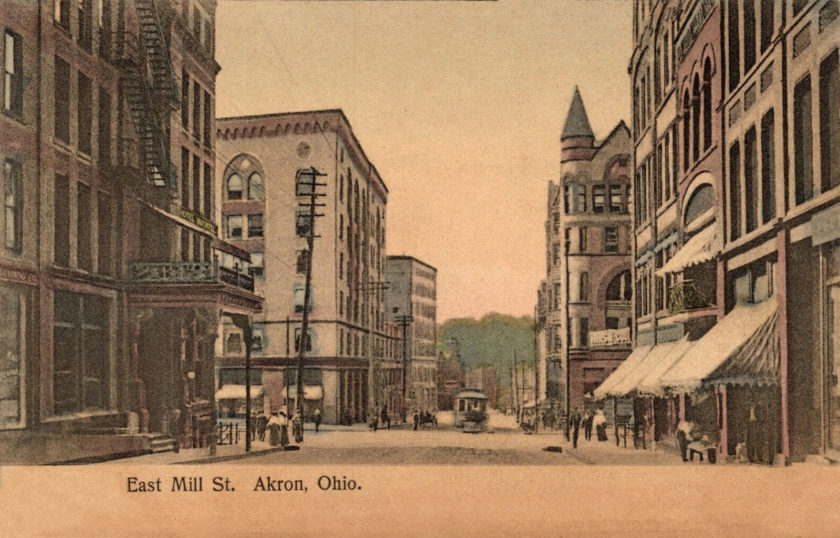
East Mill Street
Akron’s boom came from the rubber industry, but before that, it was an important canal town, a regional center for milling and a notable mass-producer of clay products.
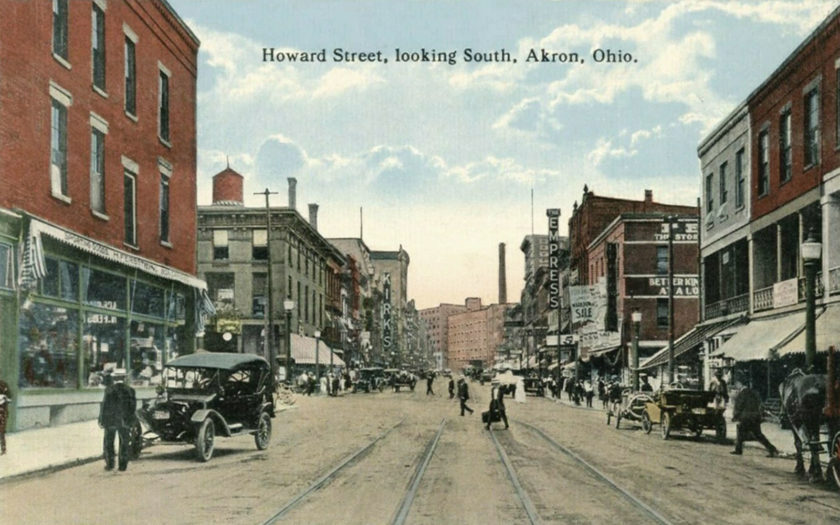
Howard Street, looking South
At one time, Howard Street was one of the most popular areas of Akron’s downtown. Busy people, cars, and horses with carts fill the scene outside Federman’s “Lowest Price Store in Akron.” Also in the scene – the Empress theater, and Kirk’s.
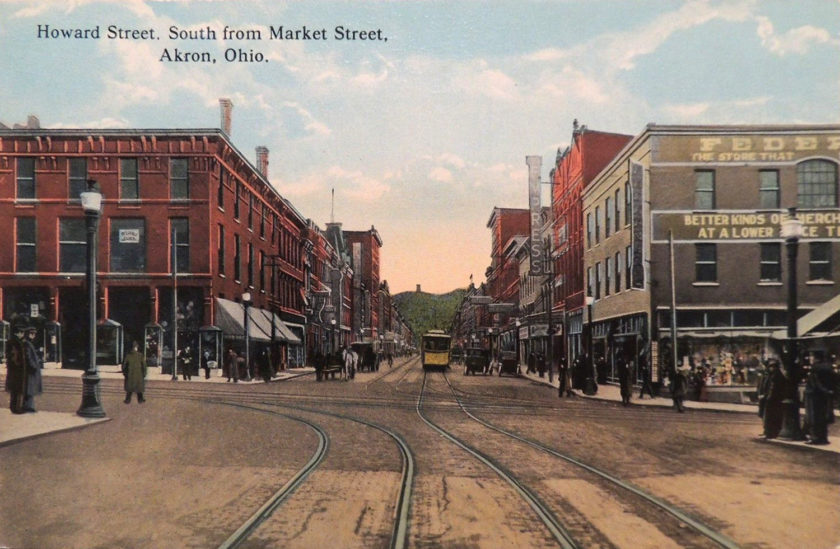
Howard Street
It may be unrecognizable today, but the one-time importance of Howard Street can easily be seen in this postcard view as it appeared looking South from Market Street. Busy people, cars, horses with carts, and trolleys fill the scene outside Federman’s “Lowest Price Store” in Akron.
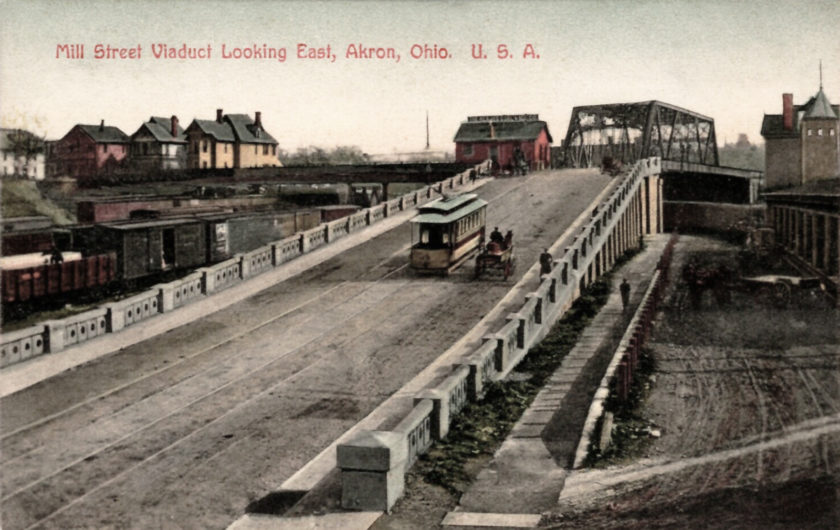
Mill Street Looking East
A streetcar is seen ascending the Mill Street Viaduct as it leaves downtown headed over the city’s main rail lines. At the right can be seen the Cleveland Akron & Columbus freight shed.
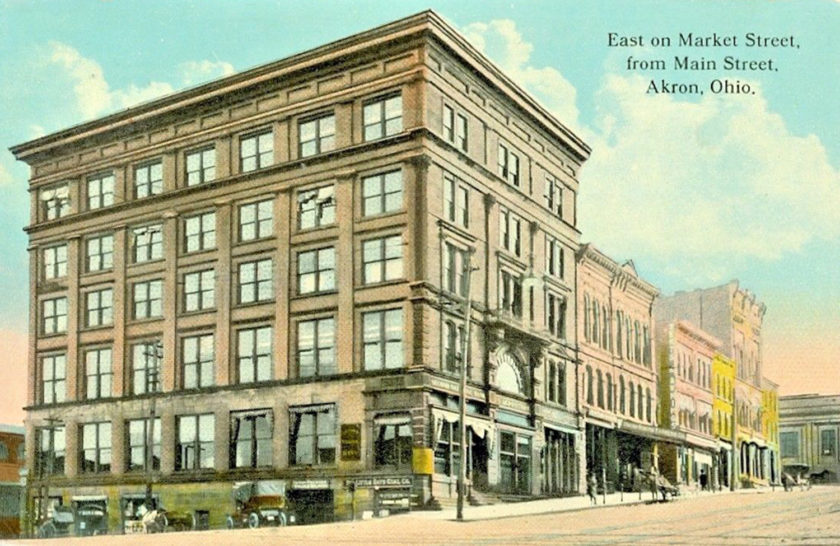
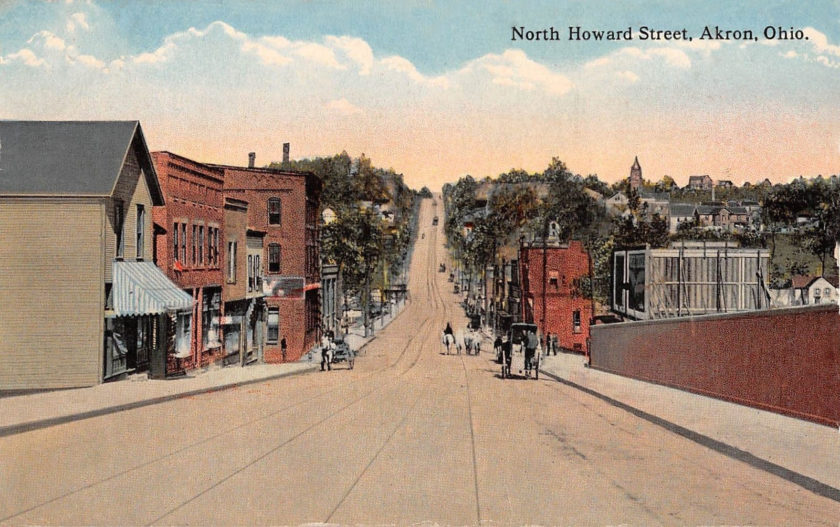
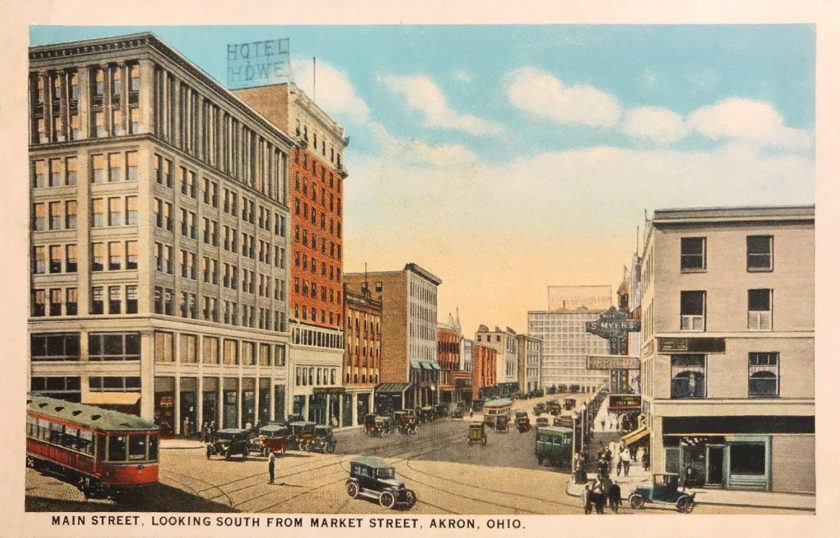
Main Street Looking South
Postcard view of Akron’s Main Street from Market Street looking south. Founded along the Little Cuyahoga River in 1825 by Simon Perkins and Paul Williams, the location of Akron carefully and strategically planned at the summit of the developing Ohio and Erie Canal.
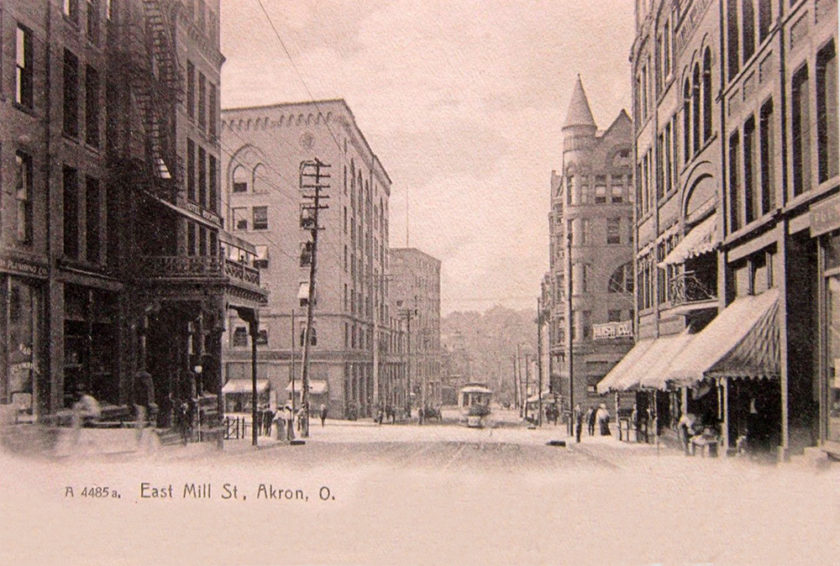
East Mill Street
Akron’s boom came from the rubber industry, but before that, it was an important canal town, a regional center for milling and a notable mass-producer of clay products.
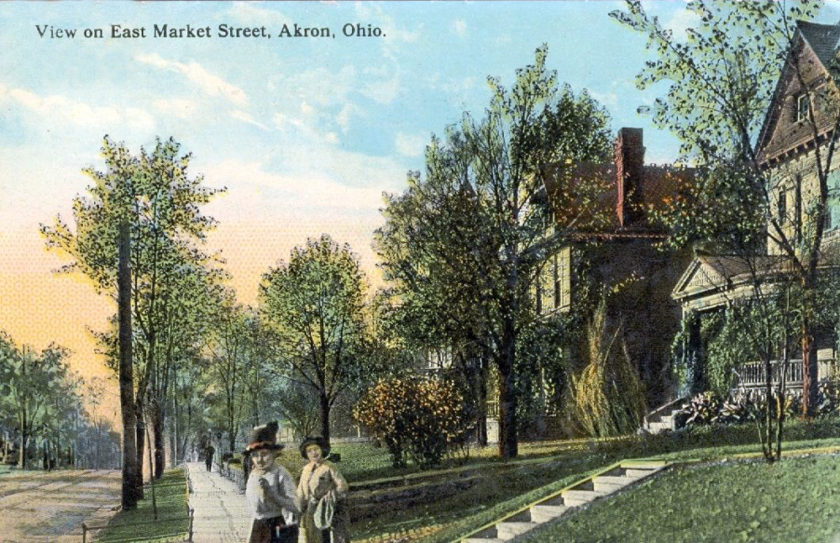
View on East Market Street
East Market Street featured the homes of F.A. Seiberling (Goodyear), Ferdinand Schumacher (Quaker Oats) and O.C. Barber (Diamond Match).
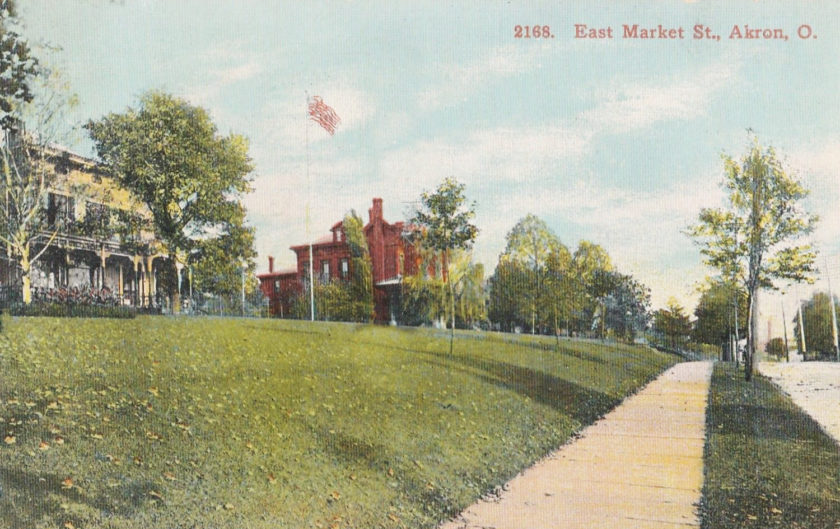
East Market Street
The street has been called Millionaires’ Row by some and rightfully so. Before it was commercially developed, Akron’s East Market Street was populated by Akron’s most famous names. F.A. Seiberling (Goodyear), Ferdinand Schumacher (Quaker Oats), O.C. Barber (Diamond Match).
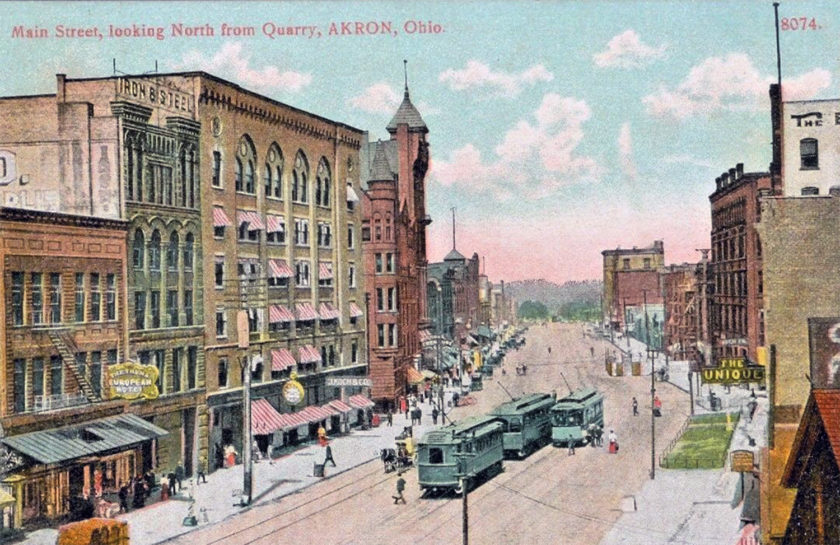
Main Street – looking North from Quarry
The Unique theater on Main Street was one of Akron’s famous vaudeville theaters. Around 1905, The Unique would be converted into Akron’s first motion picture theater.

East Market Street – Looking West
The Empire House opened on November 20, 1847. The hotel served Akron visitors until it was torn down in 1912 to make way for the Portage Hotel.
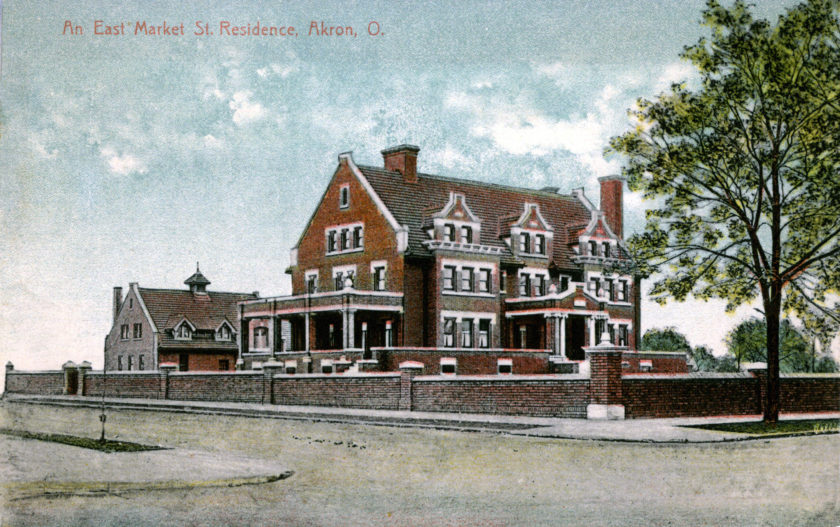
East Market Street Residence
Although difficult to recognize today, East Market Street was once home to the area’s wealthiest and most influential residents. From industrial tycoons to the political elite, East Market was where they called home.
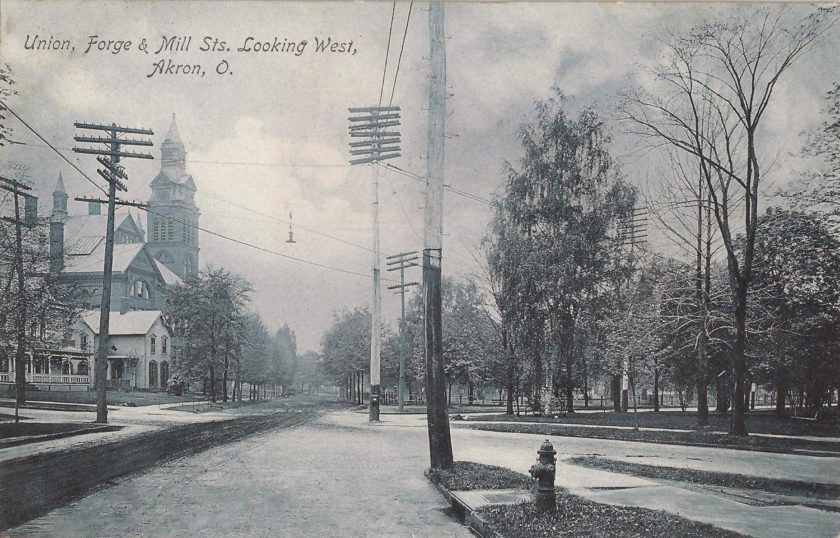
Union Forge and Mill Streets
A view of the much-changed intersection of Union Street, Forge Street and Mill streets near downtown Akron. Akron’s old High School can be seen on the left side of the image.

Main Street – Looking South… North
A view of a busy Main Street looking North with Mill Street as the first intersection. Akron was central to the street car and interurban rail traffic of the day.

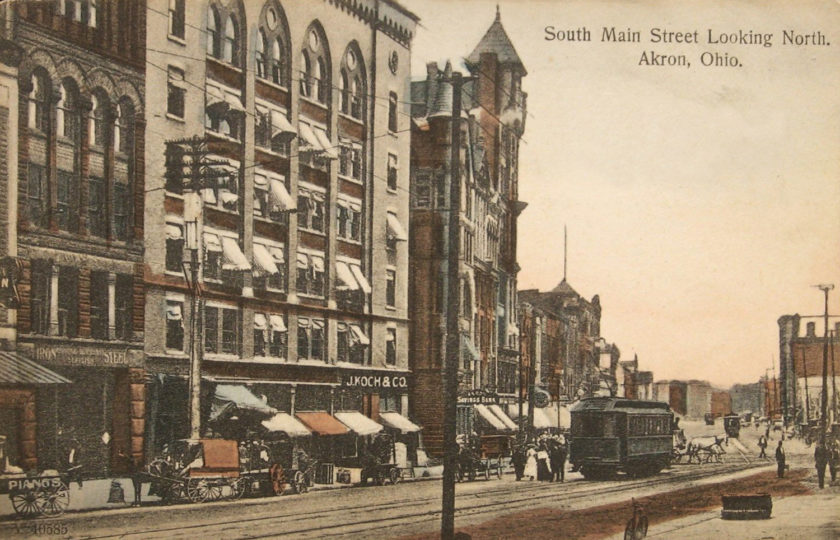
South Main Street
At a time before automobiles ruled the streets, most of Akron’s leading stores, theaters, and hotels were located along South Main Street. Trolley’s and horse carts added to the bustle of downtown.
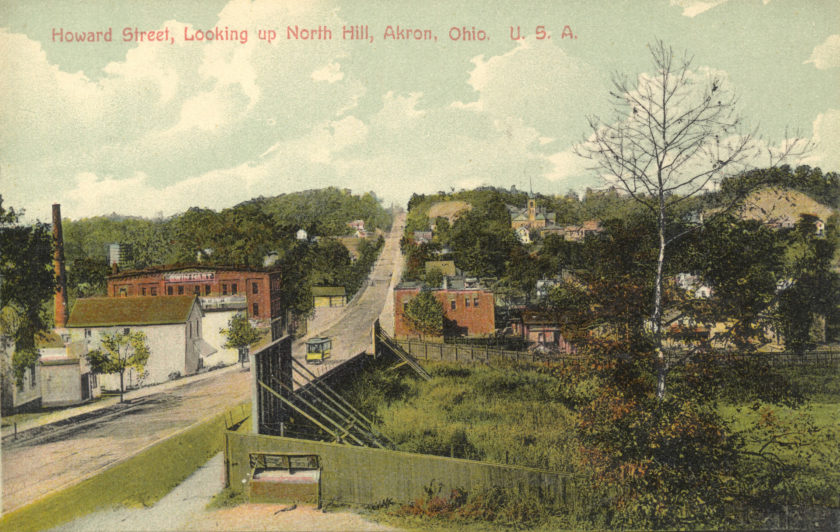
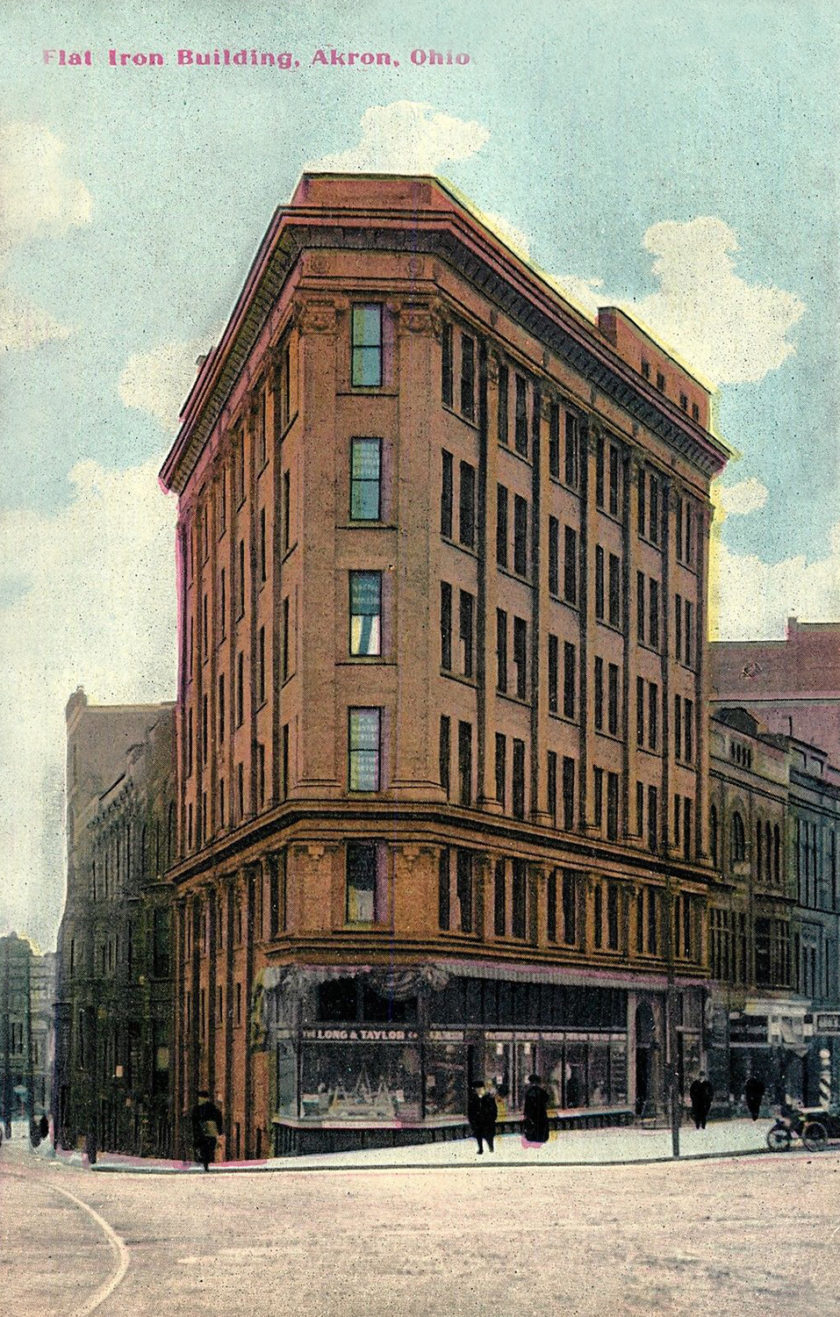
Flat Iron Building
Akron’s Flatiron Building was located at Howard and Main Streets in downtown Akron. It was built in 1907 and demolished in 1967.
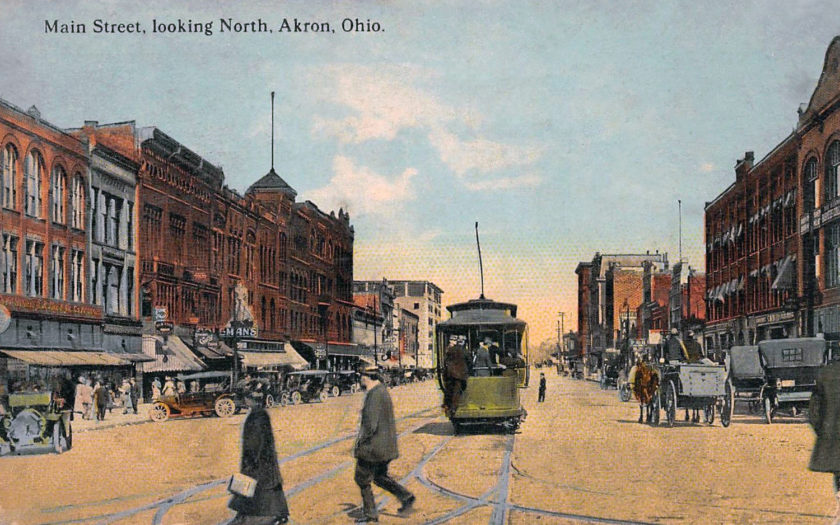
Main Street, looking North
An early view of Akron’s Main Street complete with streetcar, horse cart and vintage automobiles.